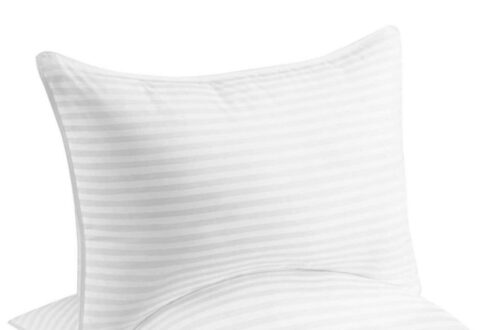What is it and What Does it Feel Like?
The term tendonitis refers to acute inflammation of the tissue and tendinosis is a chronic inflammation and thickening of the tendon resulting in degeneration over time. These conditions are both characterized by pain, inflammation, stiffness and limited tolerance to activity.
What Causes the Pain?
The pain in both these conditions is a result of altered mechanics over time, repetitive stress as well as intrinsic factors in the body.
Diagnostic Testing
It is important to obtain diagnostic testing prior to treatment of achilles conditions. Bony calcificatons, blood flow, and degree of thickening of tissue can be determined with imaging studies and ultrasound.
Below are treatment techniques to consider if you are experiencing Achilles Tendinopathy:
- ACTIVITY MODIFICATION – Transitioning to non weight bearing activity such as swimming and biking helps eliminate the load on the achilles and promote healing.
- NSAIDS (Ibuprofen, Naproxen) NSAIDs work by blocking the production of chemicals associated with pain and inflammation.
- MANUAL THERAPY (deep friction massage and cross friction mobilization) These techniques are performed by a Physical Therapist and help loosen both soft tissue and connective tissue as well as improve blood flow.
- STRETCHING- Stretching the gastrocnemius, soleus and plantar fascia will help improve the overall mobility of the foot and ankle.
- ECCENTRIC STRENGTHENING – Eccentric calf exercises involve lengthening the muscle while loading it. This specifc strengthening has shown to effectively improve collagen and muscle strength.
- FOOTWEAR- Examination of footwear will help to determine proper arch/heel support. Adding cushion to the heel as well as improving support to the arch will help reduce tension on the achilles.
- BRACING- Using a wrap or brace may help improve support and provide compression for swelling reduction.
- KINESIOTAPING- This form of taping may be used to reduce strain and decrease pain to the achilles.
- EXTRACORPOREAL SHOCK WAVE THERAPY- ESWT uses high energy sounds waves. This treatment has shown to increase blood circulation and cell activity speeding up the body’s healing process.
- IONTOPHORESIS- A modality used by physical therapists using dexamethasone to decrease pain and improve function in those with acute inflammation.
- DRY NEEDLING -Use of a microfilament needle to treat the muscular trigger point. This technique, performed by a physical therapist helps manage pain, decrease stiffness and improve movement.
- CORTISONE INJECTIONS- Used to help reduce acute inflammation to the area however, there is insufficient evidence to support long term carryover.
- PLATELET RICH PLASMA PROTEIN – PRP involves injecting a patient’s own platelets to accelerate the healing of the injured tendon. Evidence to support the use of PRP is insufficient. Due to this, PRP injections may not be covered by some insurance plans.
- SURGERY – A surgical approach should be considered as a last result. Success rate is dependent on which type of procedure is performed.
Pictured here are several exercises to assist in the recovery of Achilles Tendonopathy.
Standing Gastrocnemius Stretch
Stand facing a wall with your feet staggered. Keeping your back knee straight, bend your front knee and lean in toward the wall until you feel a stretch along the calf of your back leg. Keep your back heel on the floor for the duration of the stretch. Hold 20-30 seconds. Repeat 3x each leg. Perform 3x daily.

Standing Soleus Stretch
Stand facing a wall with your feet staggered. Bend both knees and lean toward the wall until you feel a stretch along the calf of your back leg. Keep your back heel on the floor for the duration of the stretch. Hold 20-30 seconds. Repeat 3x each leg. Perform 3x daily.

Stair Stretch
Stand with the ball of your foot on a step, the heel hovering over the edge. Hold onto hand rails for balance. Slowly lower your heel down until it’s lower than the step. Stop when you feel a strong pull along your calf. Hold for 20-30 seconds. Repeat 3x each leg. Perform 3x daily.


The “rocker” allows stretch with gentle motion for a stretch to the plantar fascia and calf.
Eccentric calf strengthening
Start on your tip toes, slowly lower your heel below your forefoot, then use your other leg (with arms holding object for support) to raise yourself back to starting position. Work up to 3 sets of 15 reps for each leg, 2x daily for 12 weeks. This should be performed once the acute symptoms have resolved.
Balance:
Balance exercises help to strengthen the ankle and provide increased support. Start by challenging yourself in a static position and progress to dynamic movements.
Bracing options:


References:
Dedes V, Stergioulas A, Kipreos G, Dede AM, Mitseas A, Panoutsopoulos GI. Effectiveness and Safety of Shockwave Therapy in Tendinopathies. Mater Sociomed. 2018 Jun;30(2):131-146.
Zhang YJ, Xu SZ, Gu PC, Du JY, Cai YZ, Zhang C, Lin XJ. Is Platelet-rich Plasma Injection Effective for Chronic Achilles Tendinopathy? A Meta-analysis. Clin. Orthop. Relat. Res. 2018 Aug;476(8):1633-1641
Woitzik E, Jacobs C, Wong JJ, Côté P, Shearer HM, Randhawa K, Sutton D, Southerst D, Varatharajan S, Brison RJ, Yu H, van der Velde G, Stern PJ, Taylor-Vaisey A, Stupar M, Mior S, Carroll LJ. The effectiveness of exercise on recovery and clinical outcomes of soft tissue effectiveness of exercise on recovery and clinical outcomes of soft tissue injuries of the leg, ankle, and foot: A systematic review by the Ontario Protocol for Traffic Injury Management (OPTIMa) Collaboration. Man Ther. 2015 Oct;20(5):633-45.
* Please note that this post contains affiliate links. If you choose to buy an item after clicking a link, I may receive a small commission from the purchase at no extra cost to you. This helps to keep this blog up and running. Thank you!*



